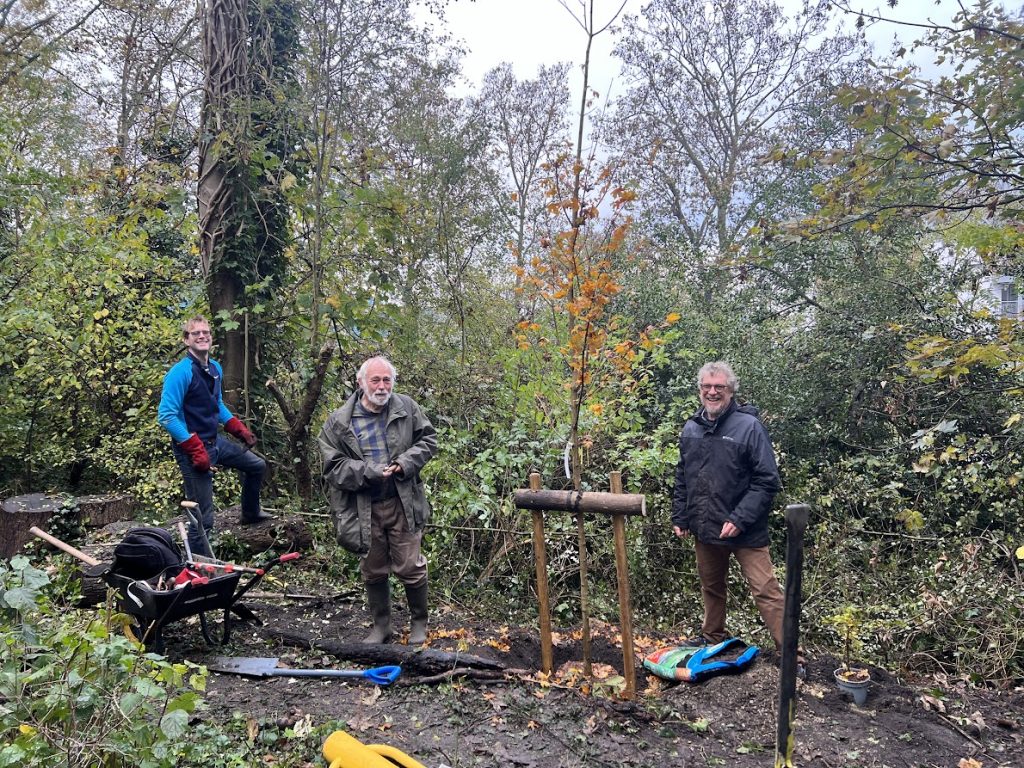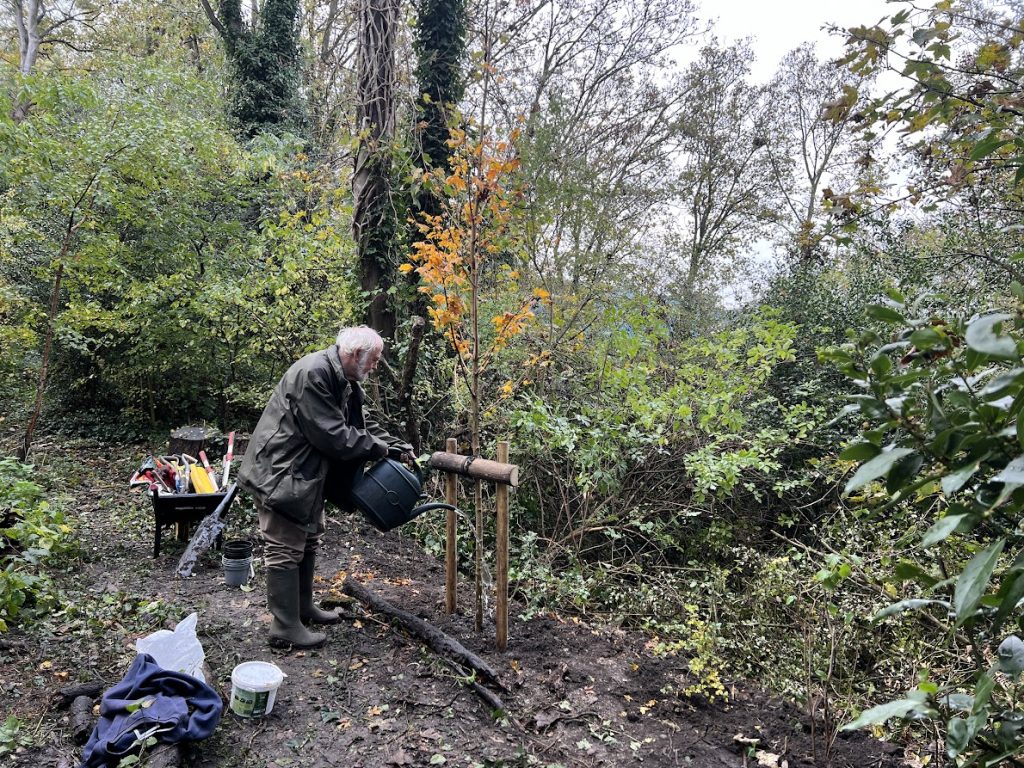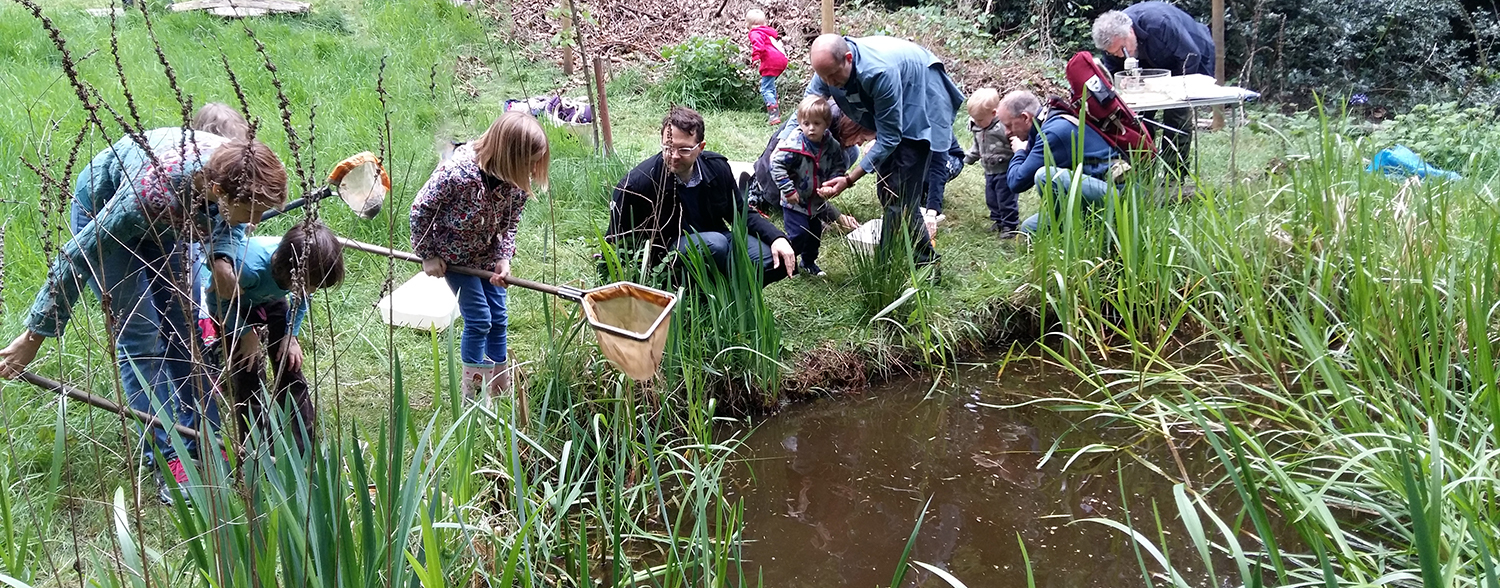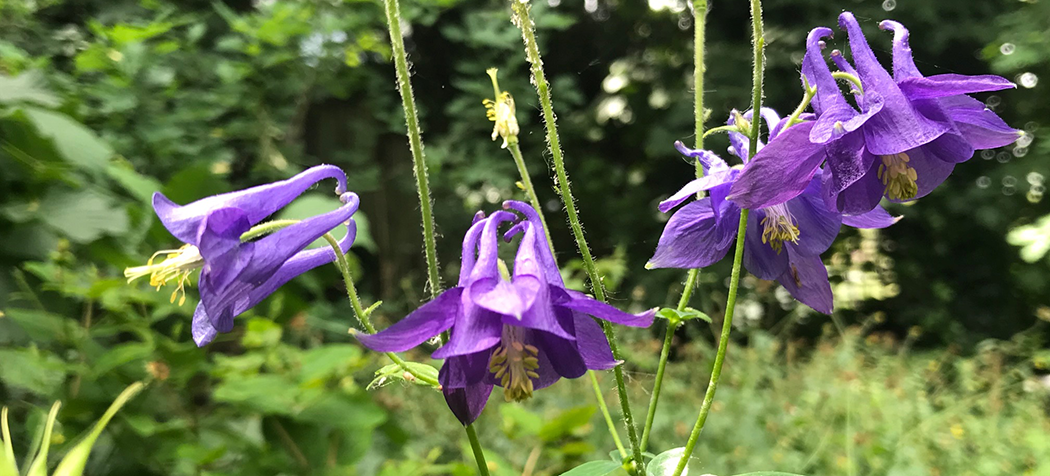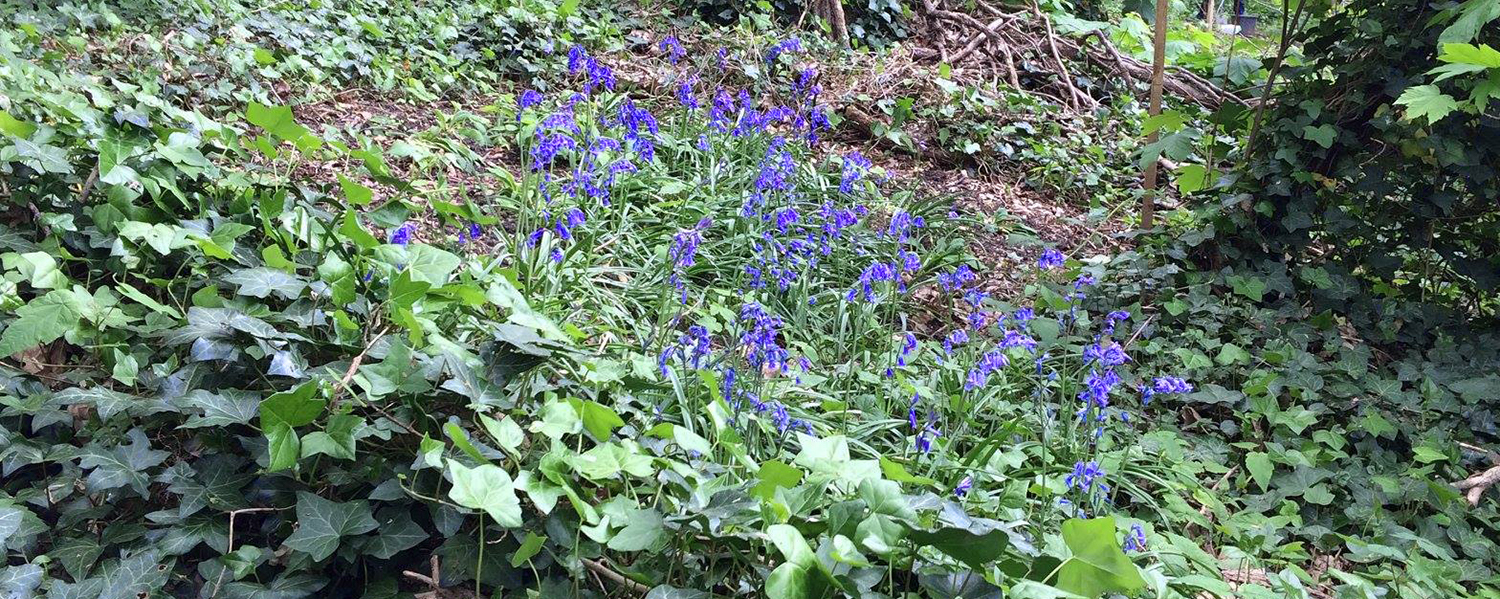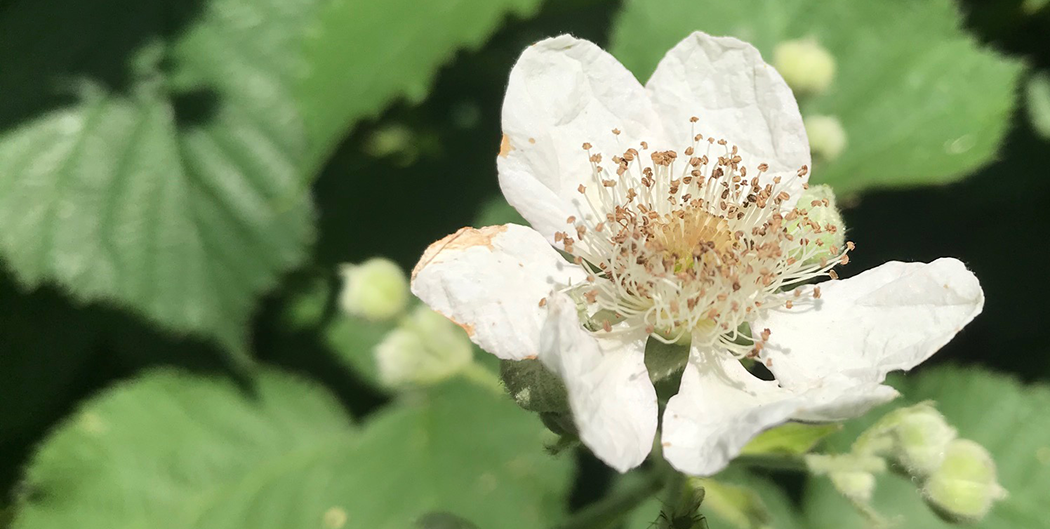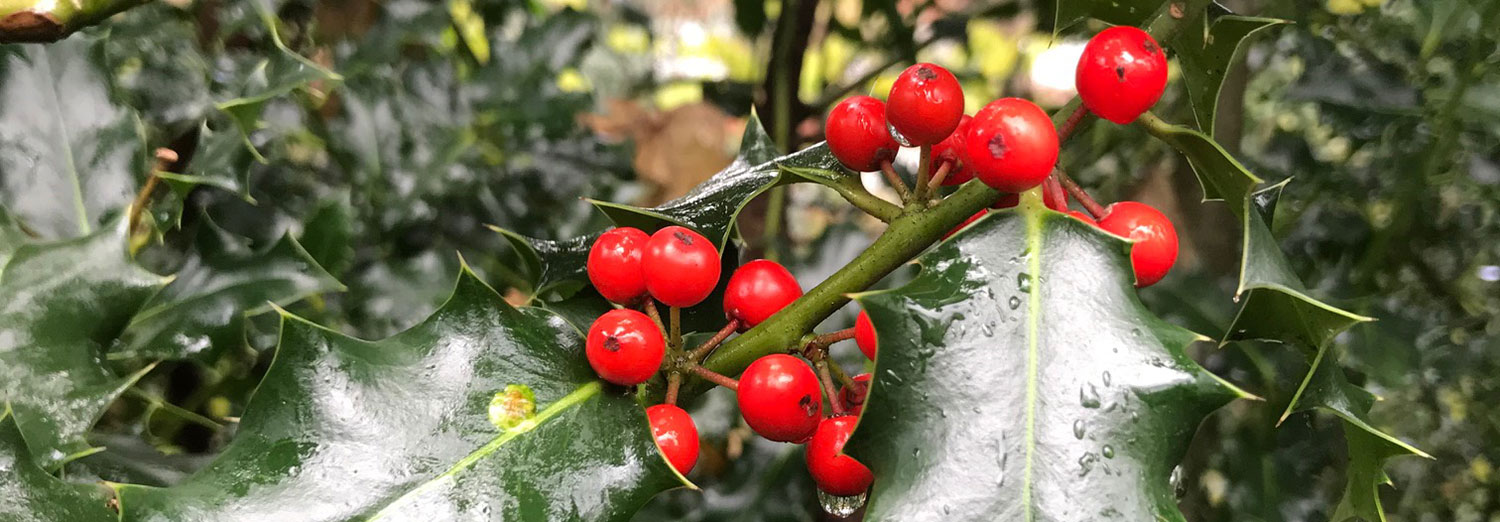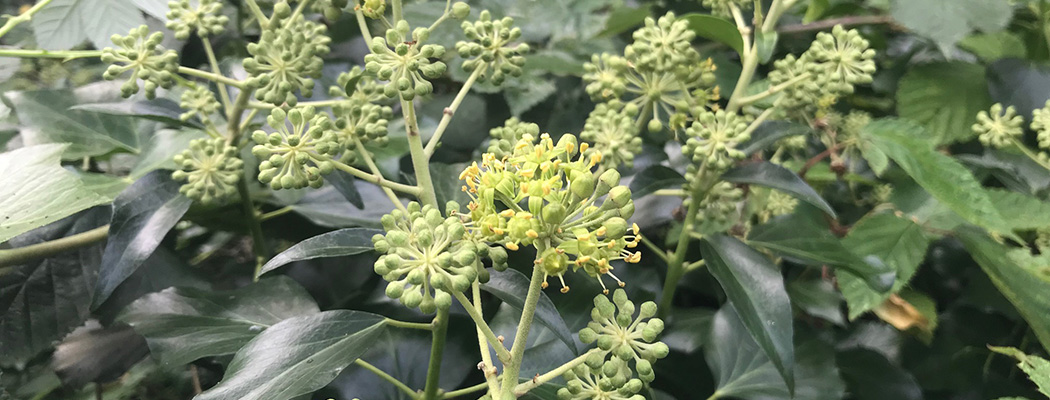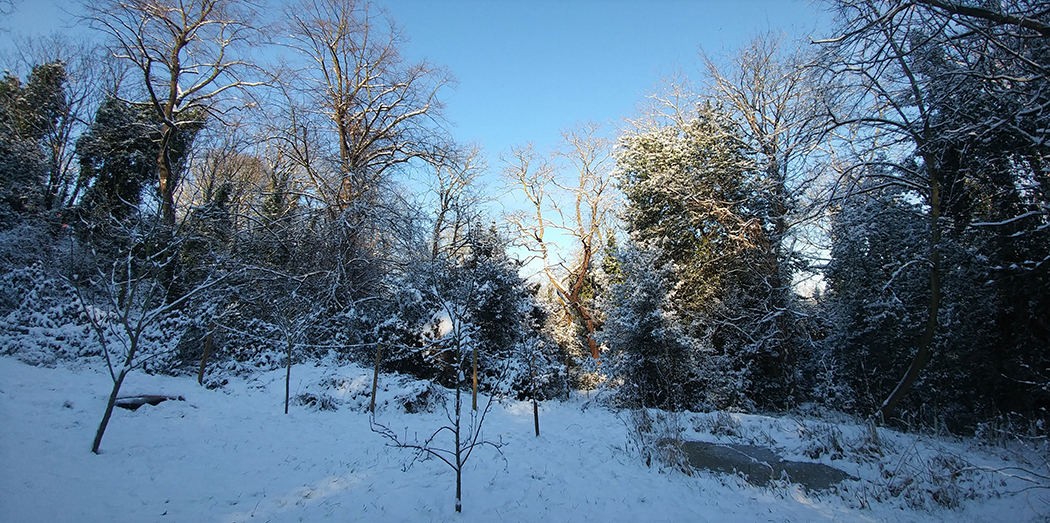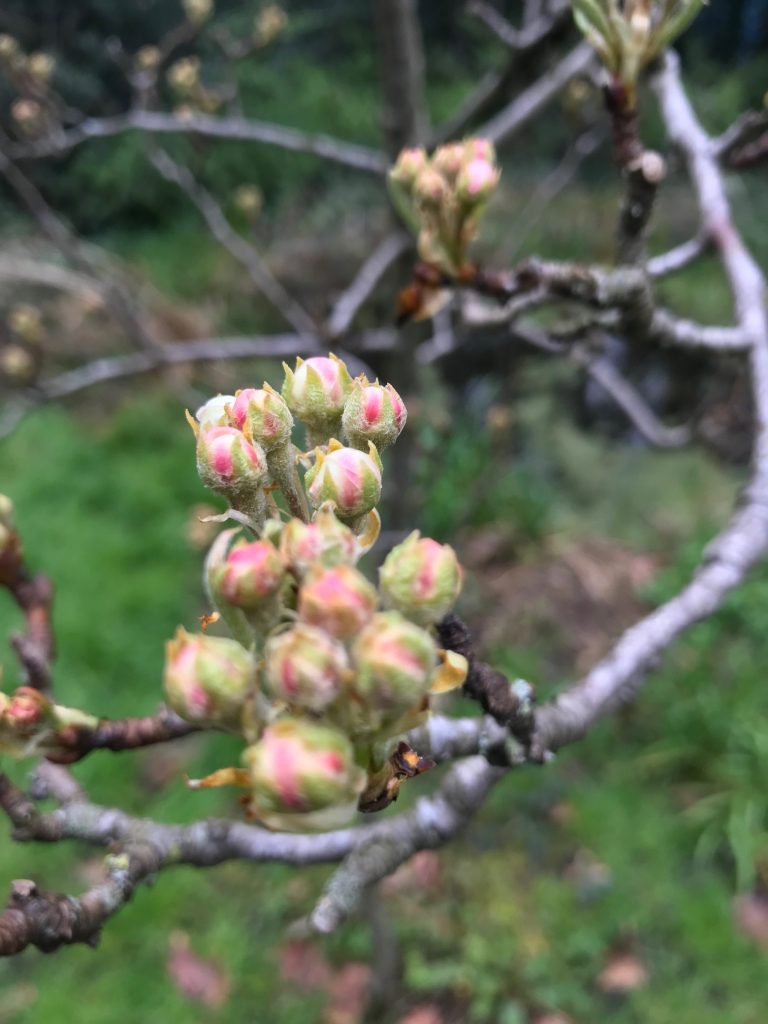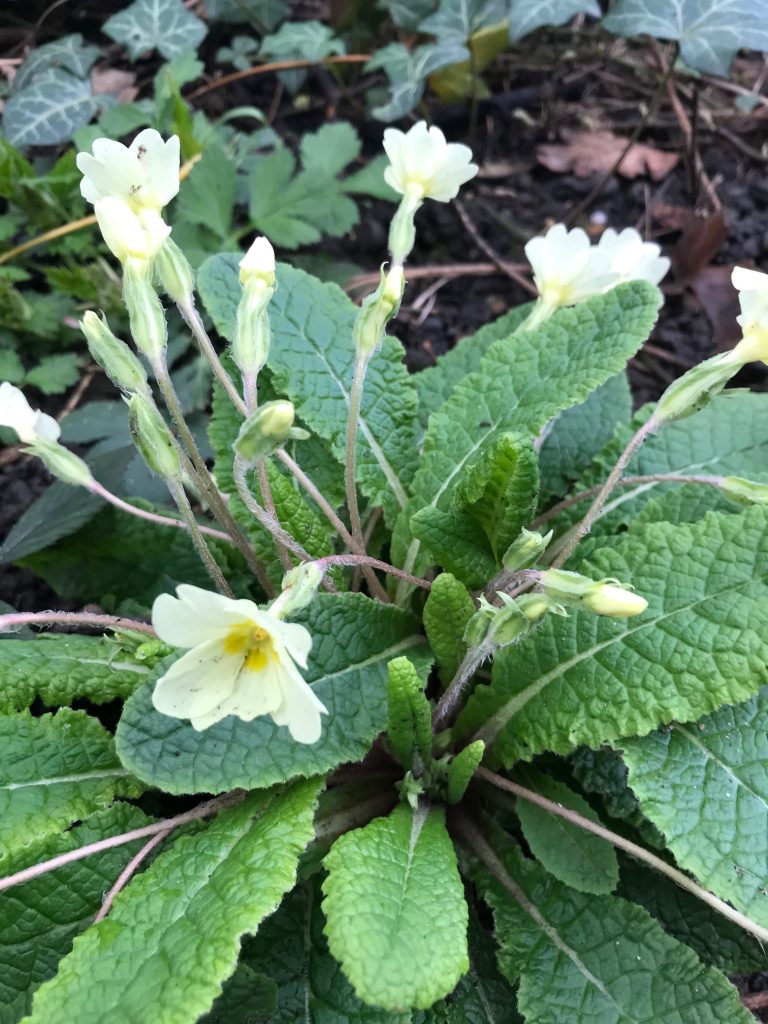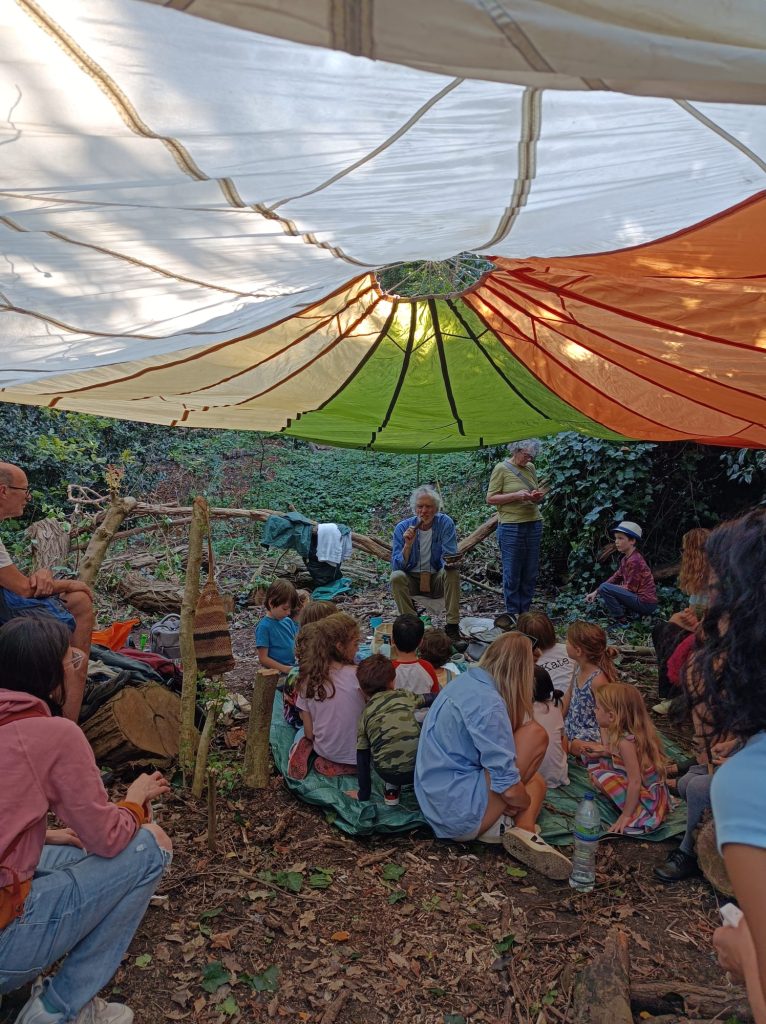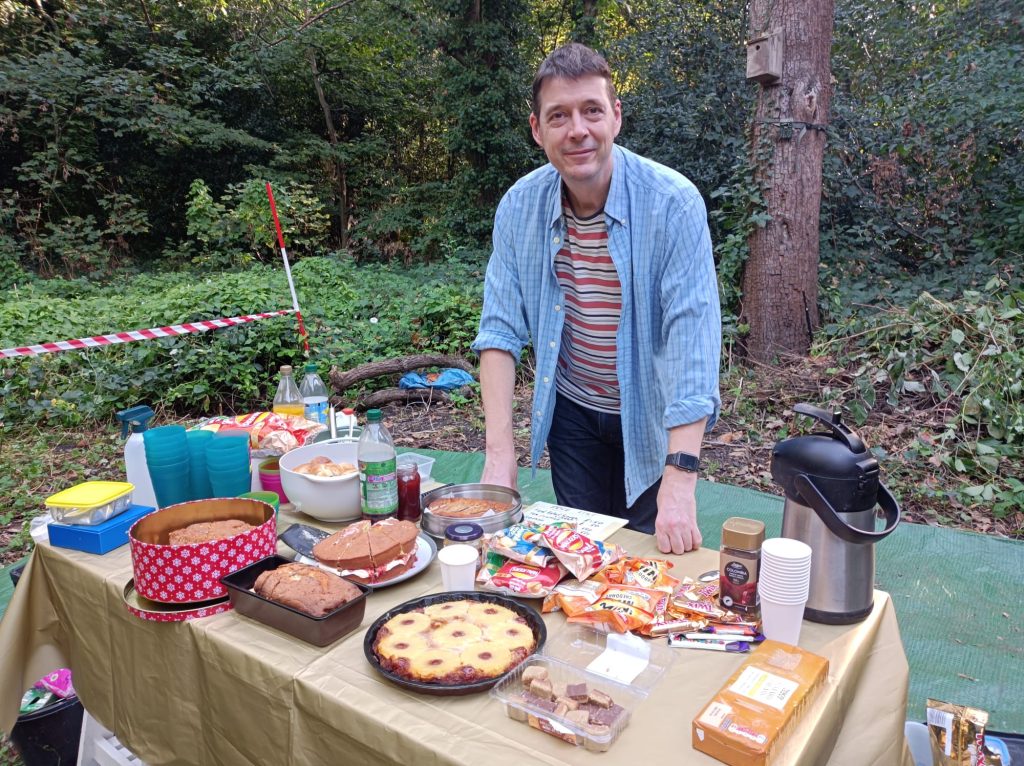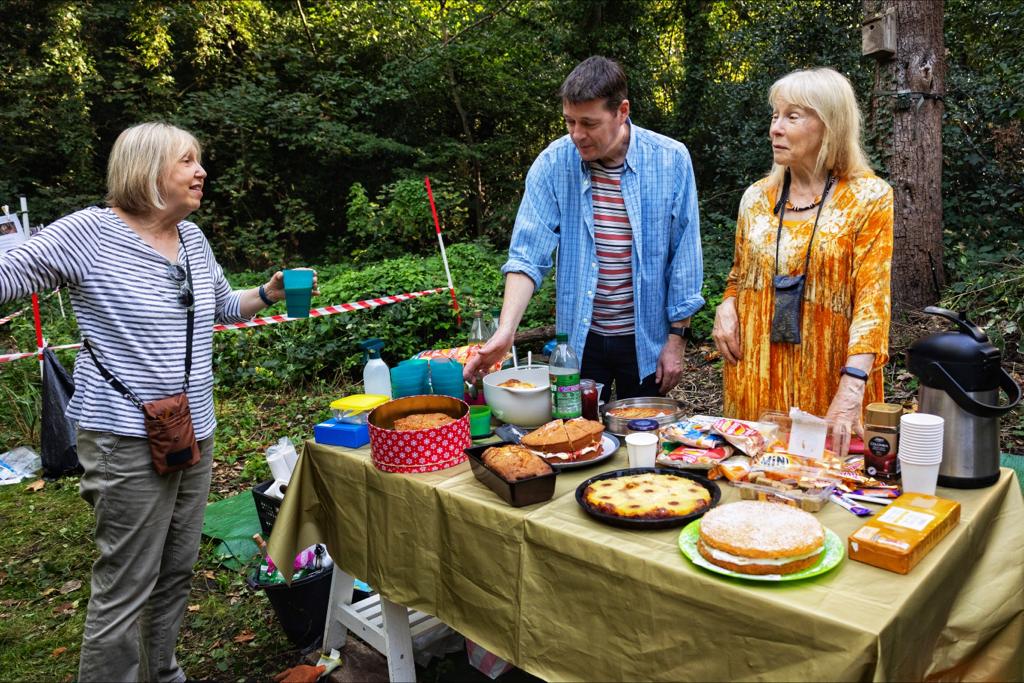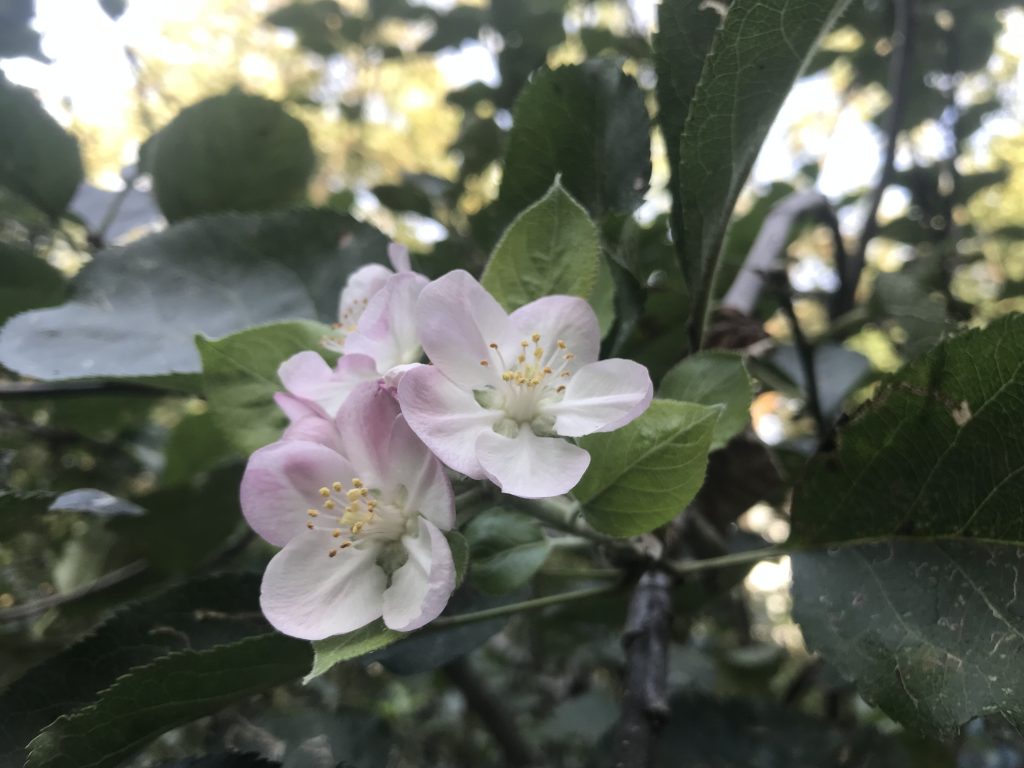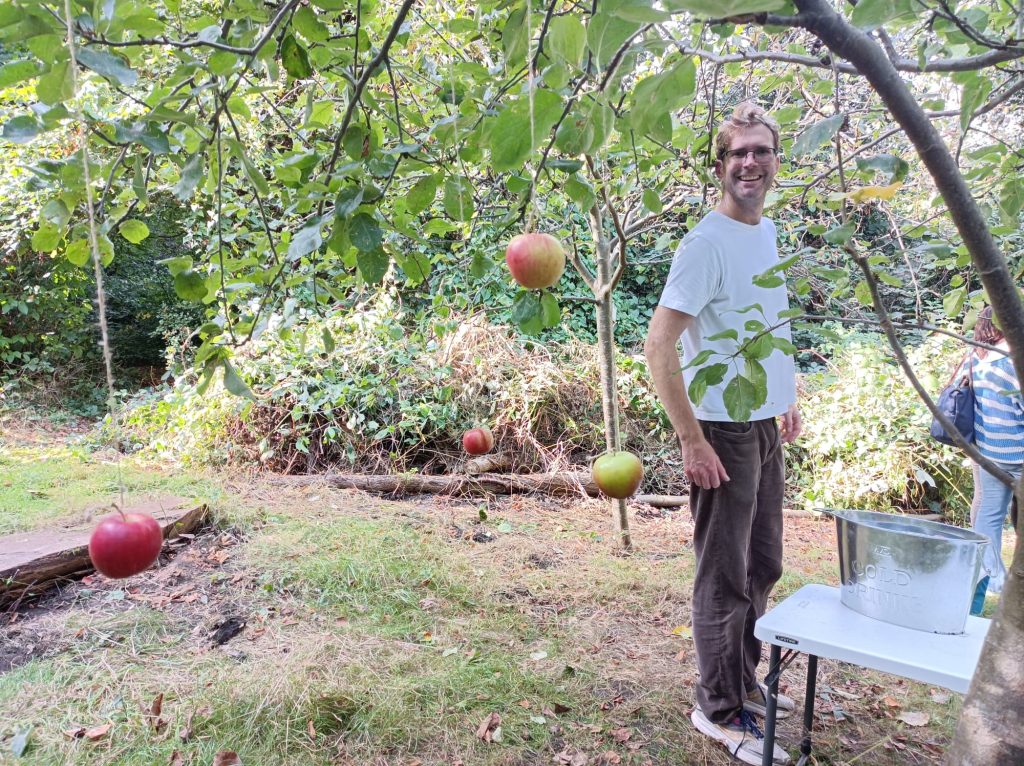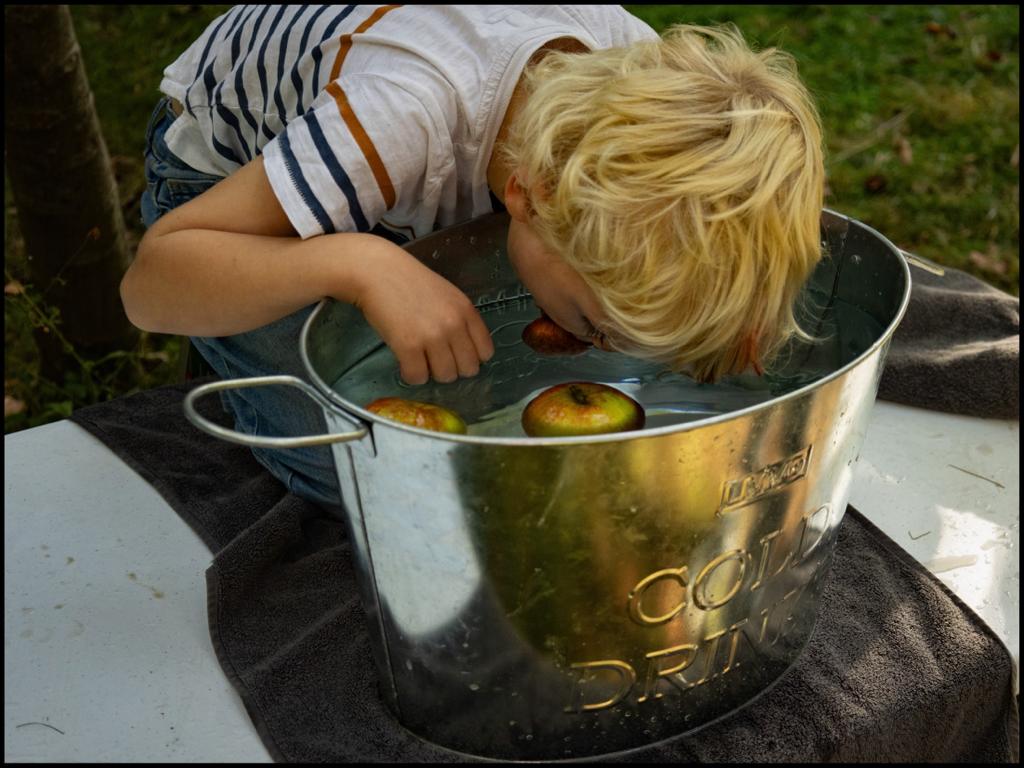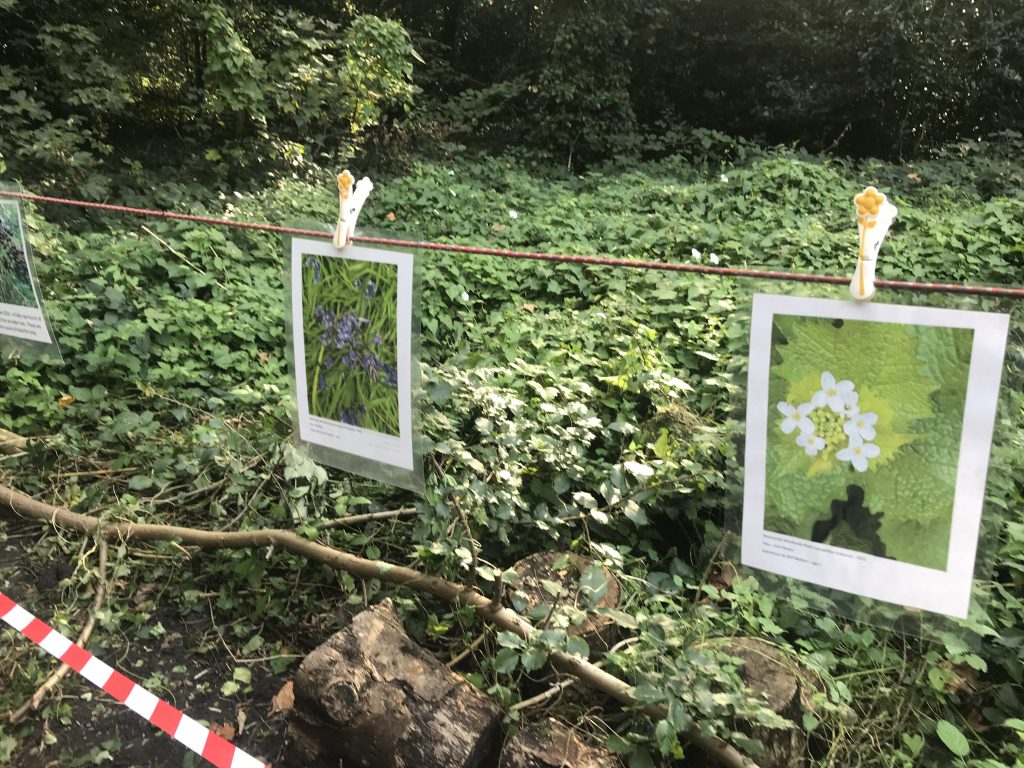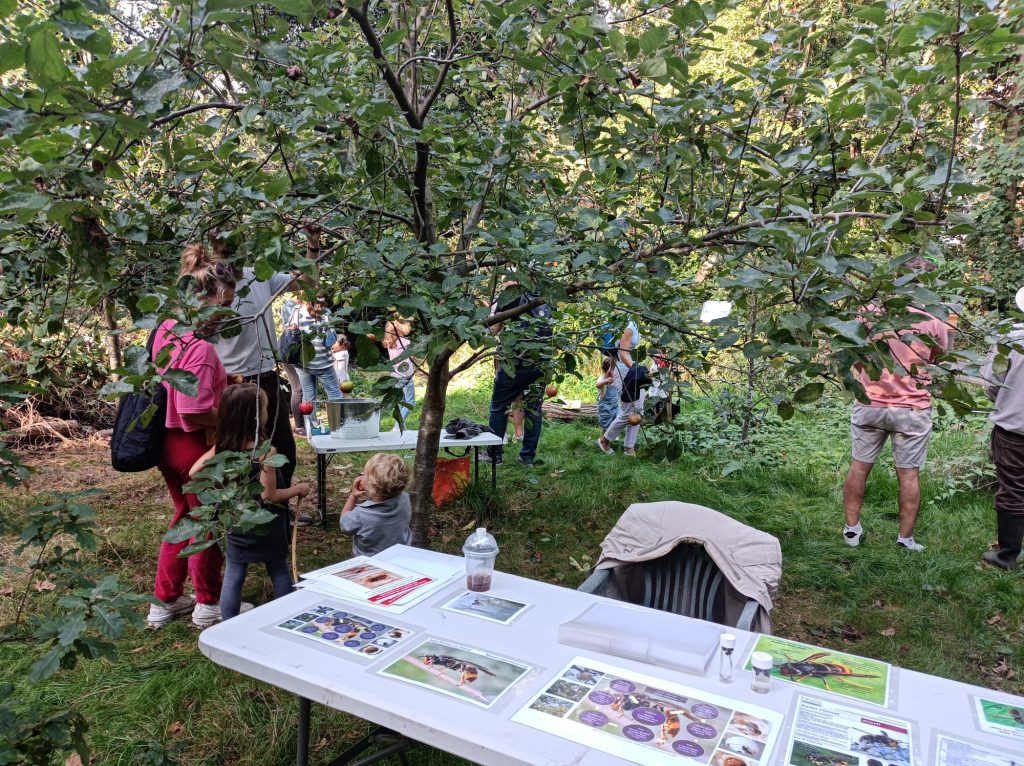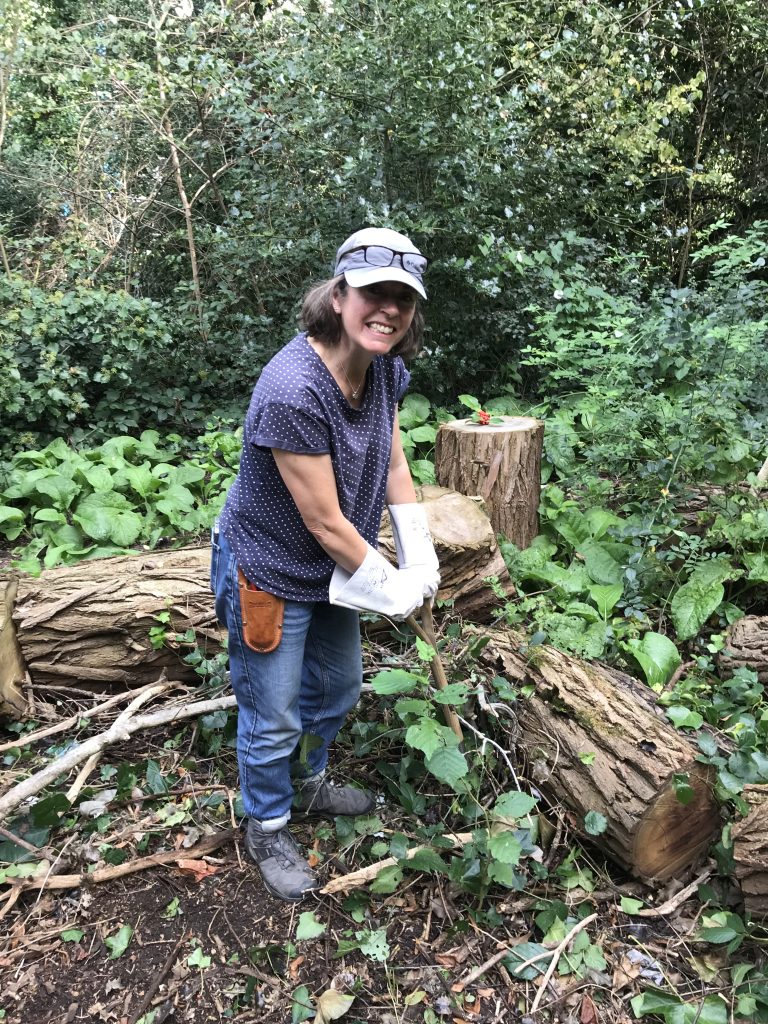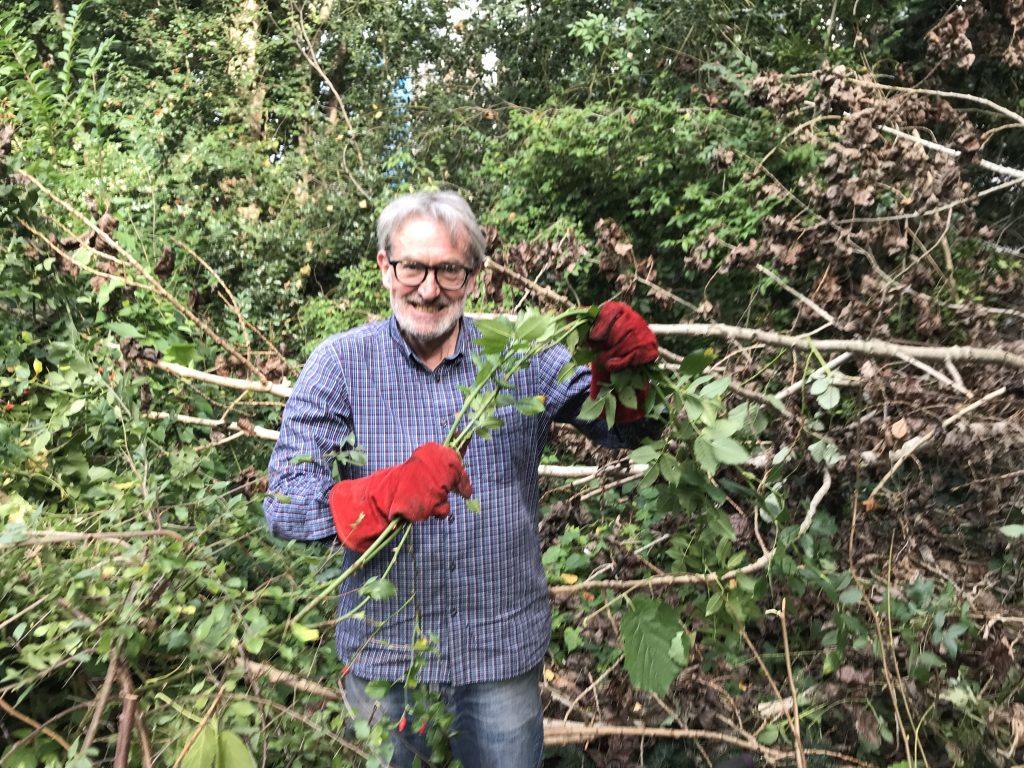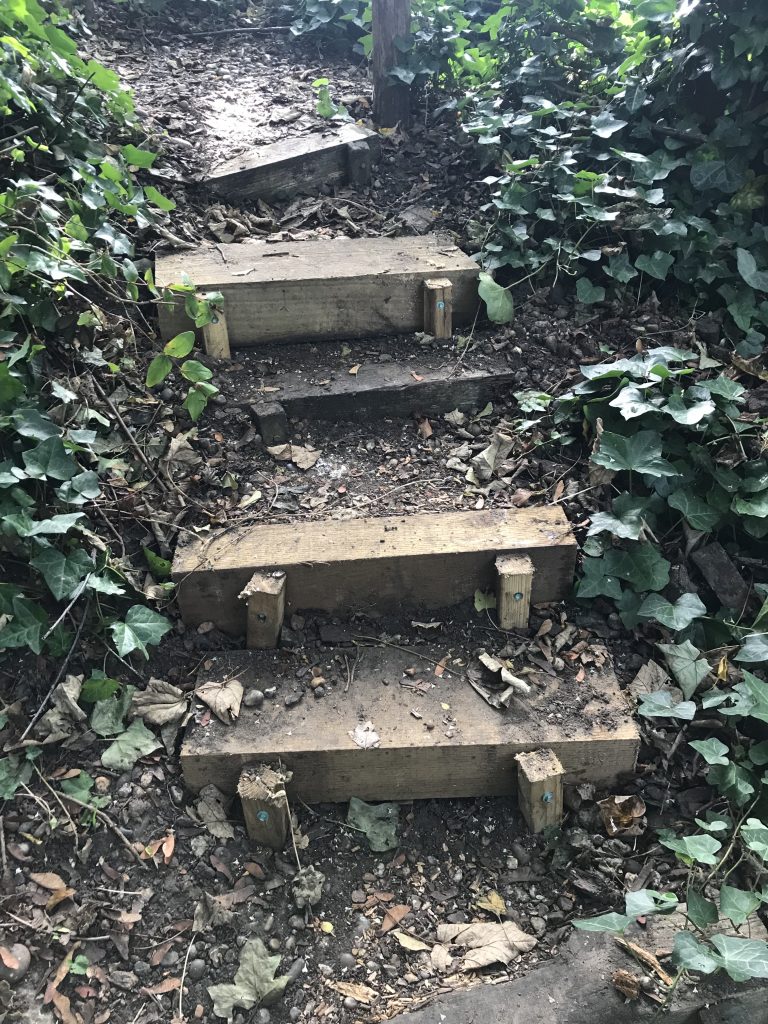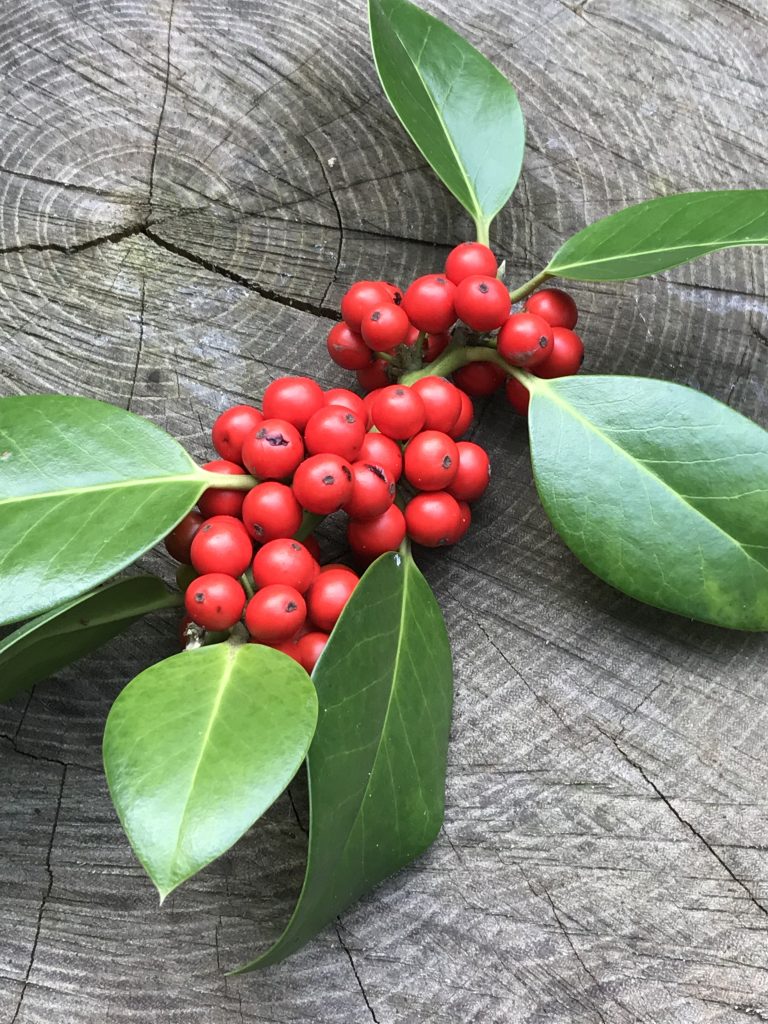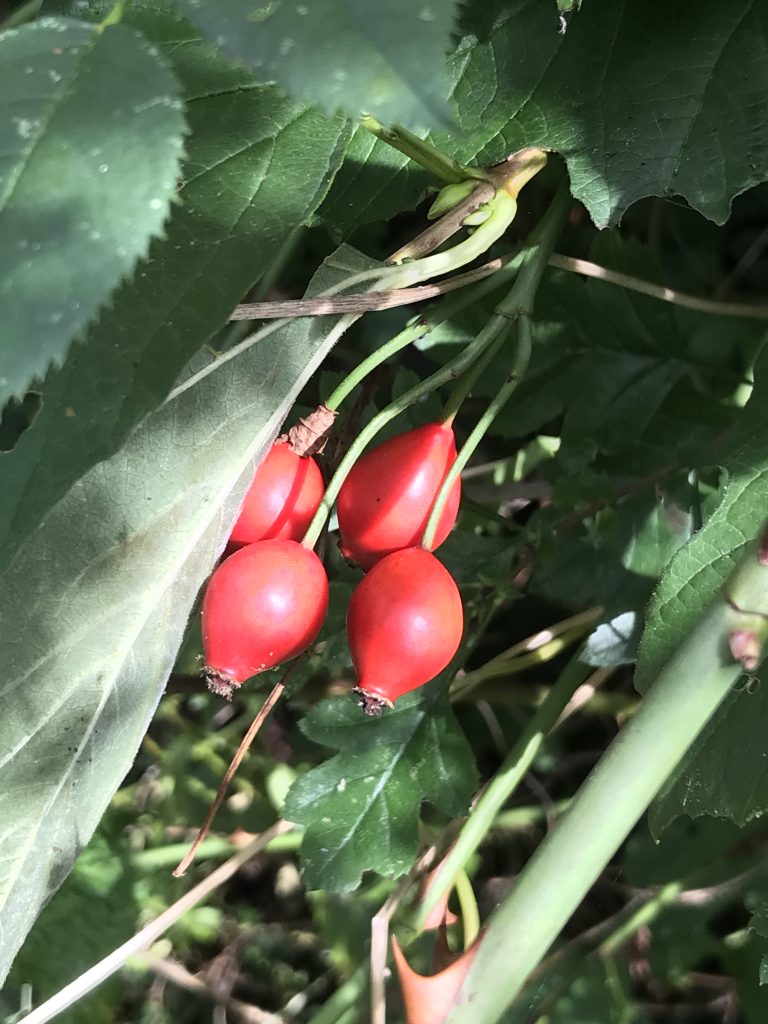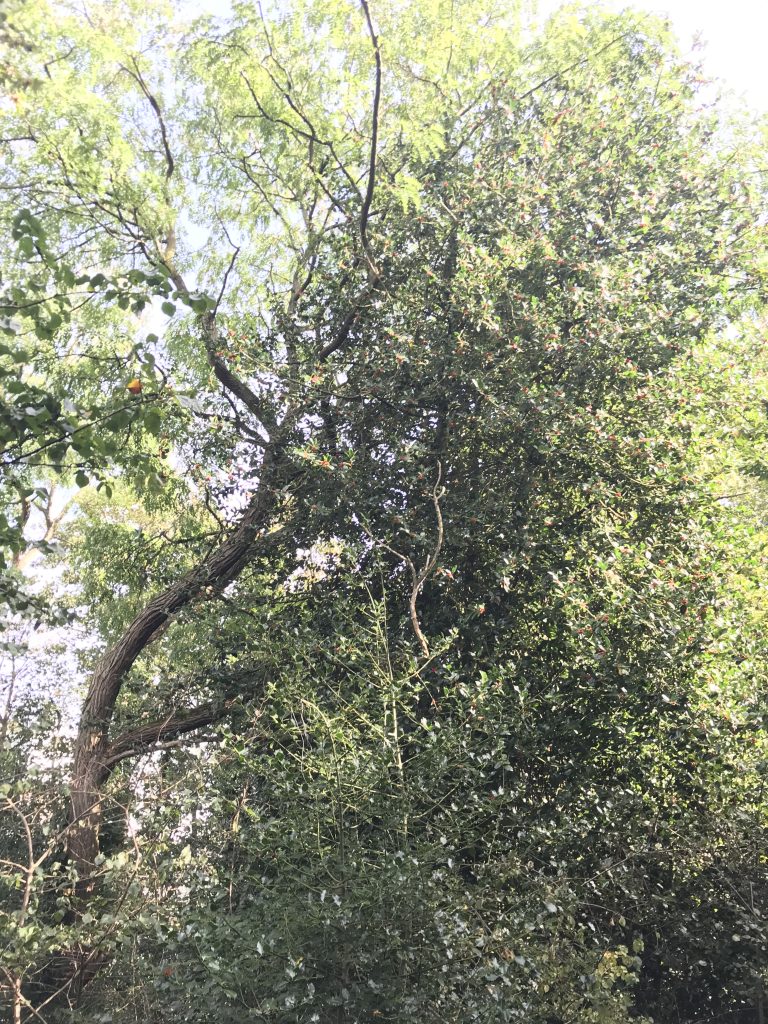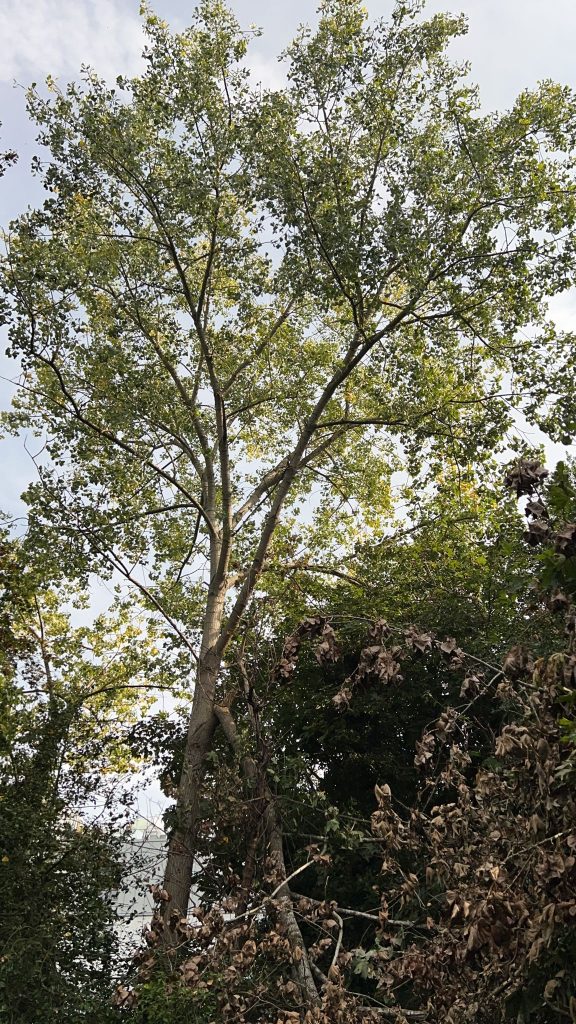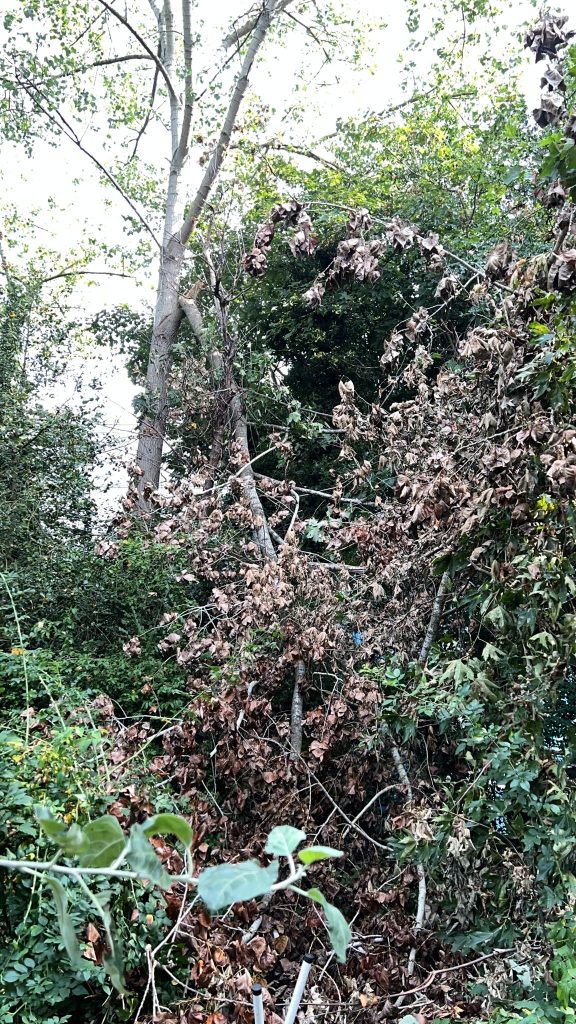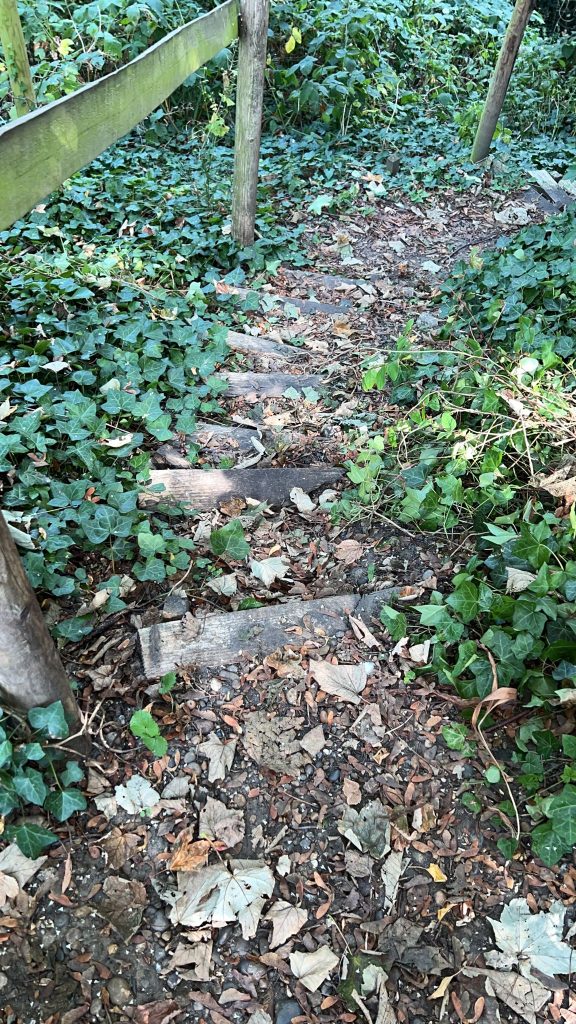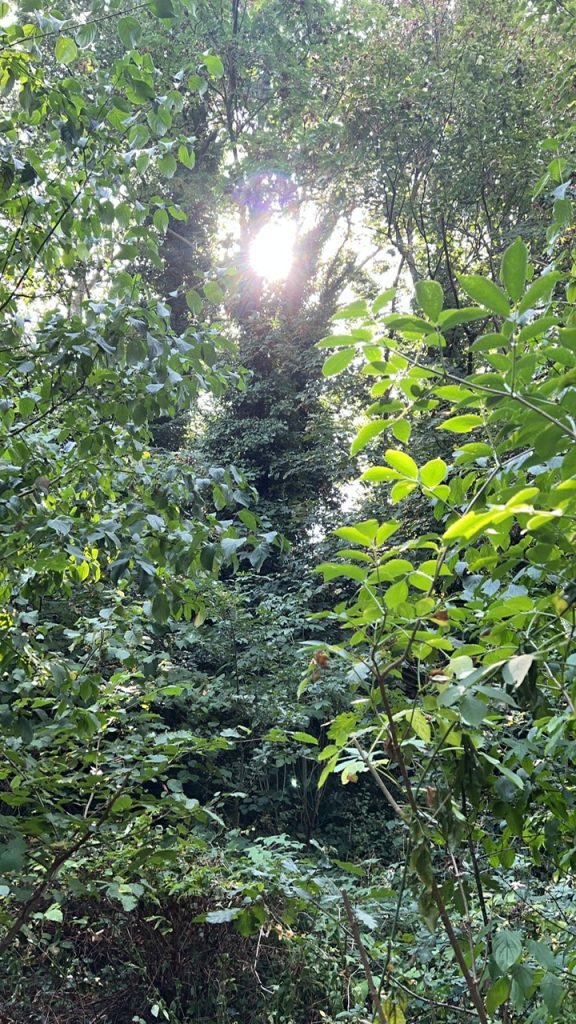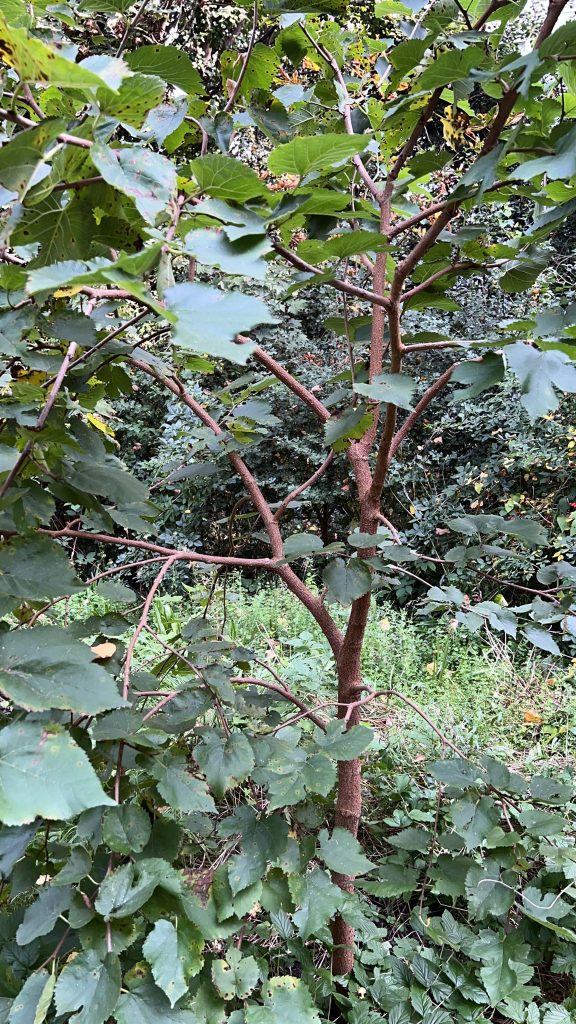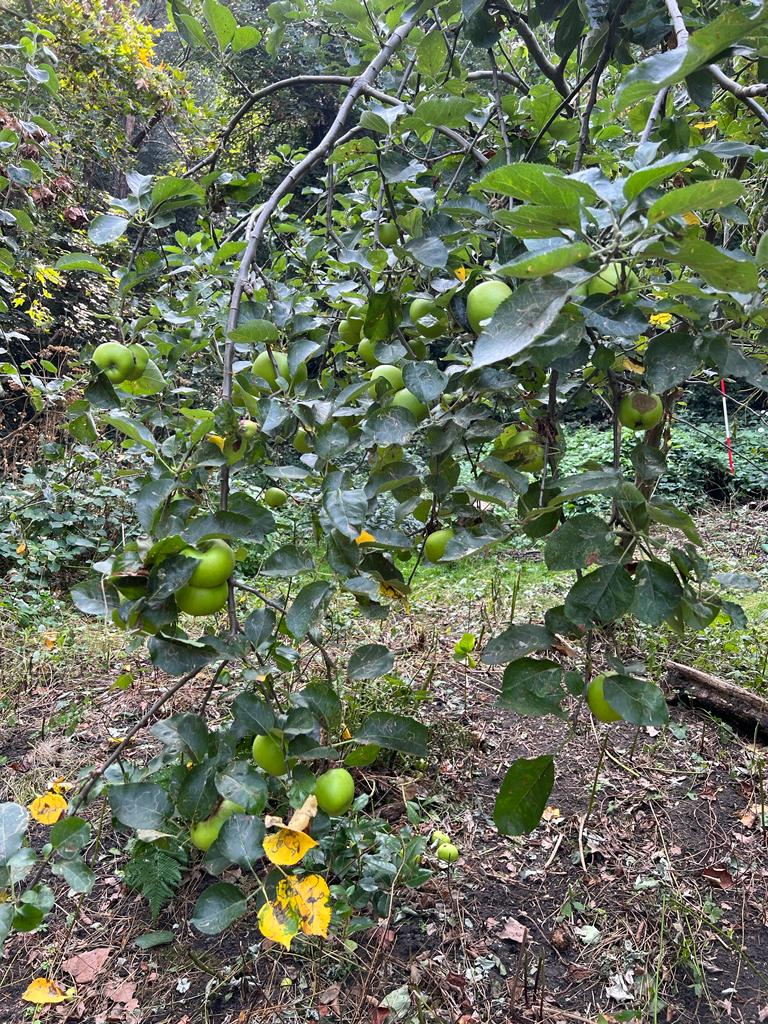The early November volunteer morning was very well attended by volunteers, committee members and also volunteers from the local Good Gym in neighbouring Charlton. The focus of this Sunday morning’s work was to coppice hazel shrubs and to remove dense holly shrubs so as to allow more light to ground level. Coppicing is a centuries old method where the trees and shrubs are cut back to ground level so as to allow strong, new stems to grow. Late Autumn to mid-Winter is the best time as the plants are dormant and there will be no new nesting of birds. The accompanying photos show everyone getting involved in the activities.
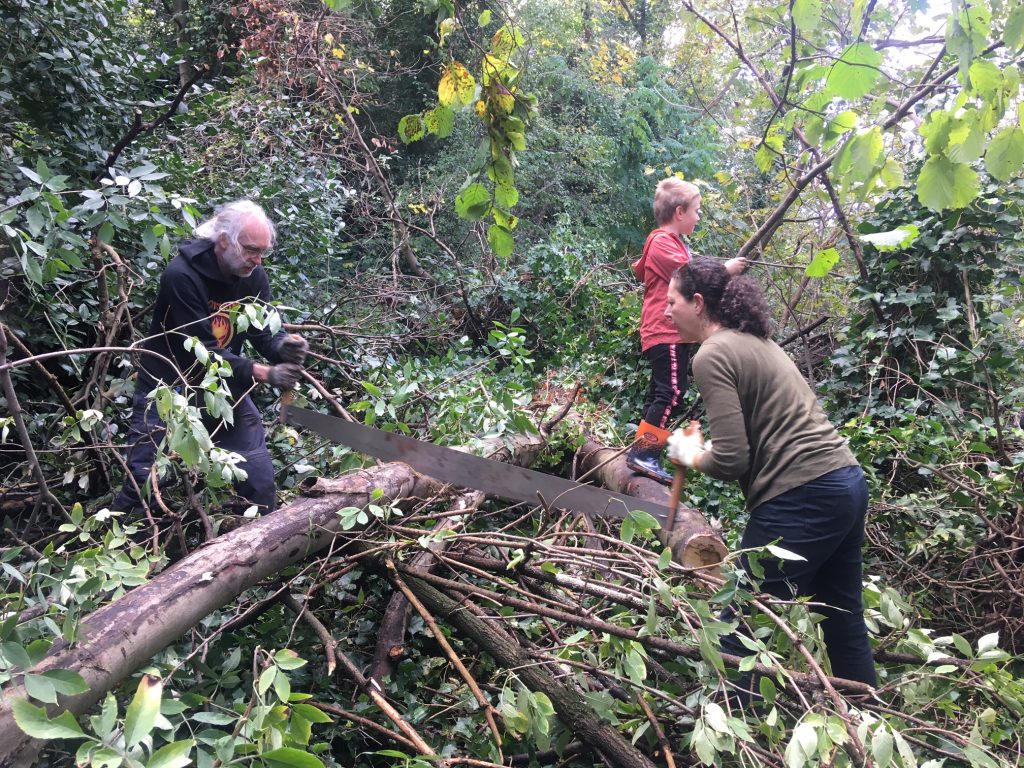
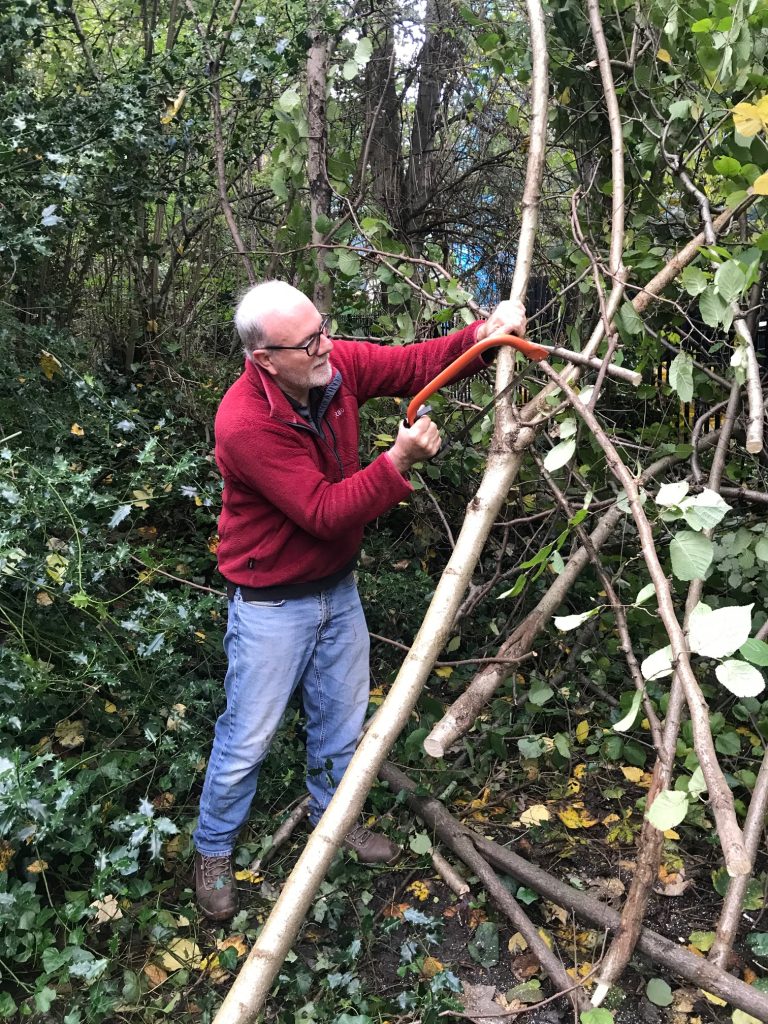
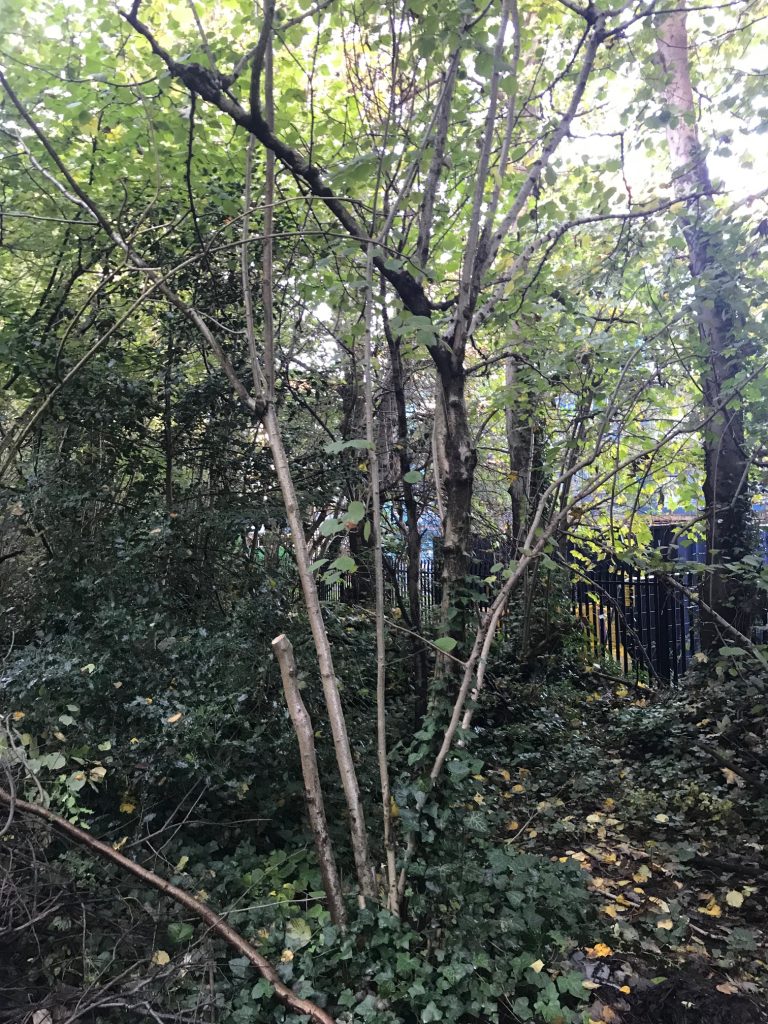
The removal of holly shrubs adjacent to Glade area and the pond also allows more light to the ground by removing dense foliage. It’s possible that the some of the holly in the woodland may have come from local gardens as noted in the shape and colours of the leaves.
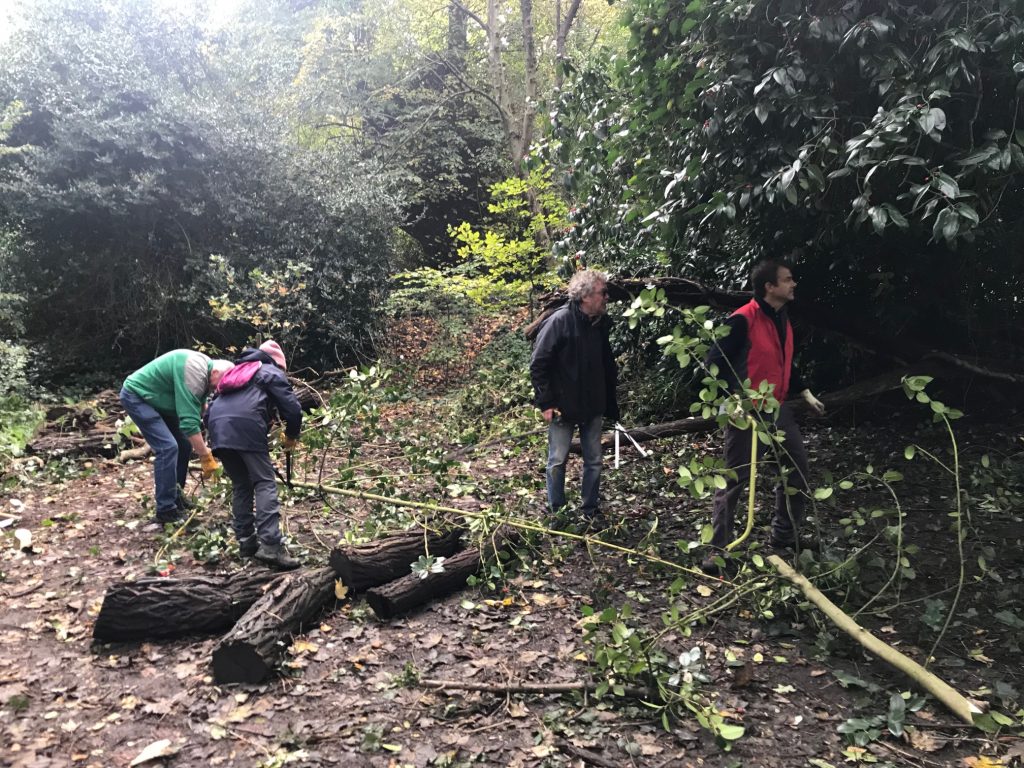
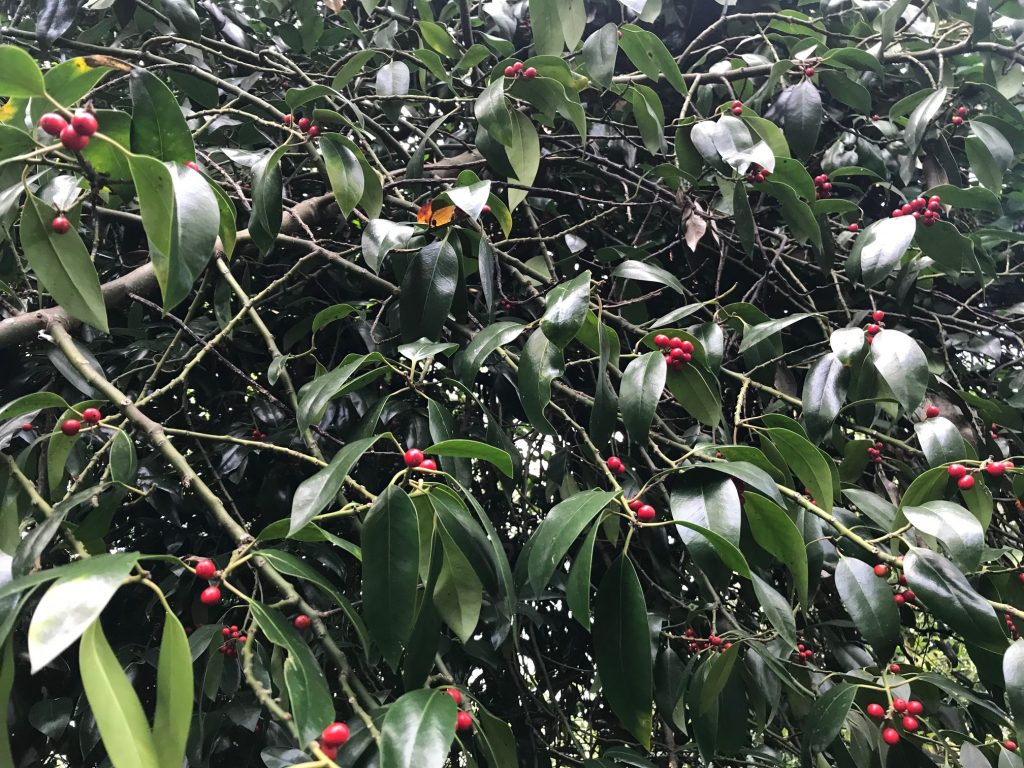
In addition to the above activities, new tree saplings where also planted. We can see our committee members with a newly staked tree and Andrew Slade watering it in.
